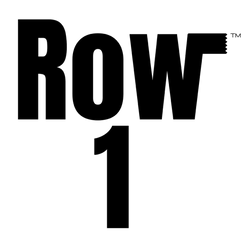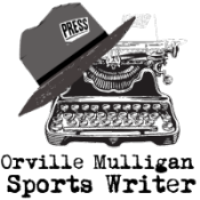Here is where we start our journey of looking at the greatest players to wear a certain jersey number. We progress up the numbering system to number 1 in this edition. On the Pigskin Daily History Dispatch that released on February 10 we wer Joined by our guest Larry Schmitt.
Larry Schmitt is a New York City pro football historian who specializes in the New York Football Giants, a research partner for Gridiron Uniform Database, and a frequent contributor to Big Blue Interactive and when we have a topic from pro football in the Big Apple we go to who I refer to as the Guru Of the NYC Gridiron, (October 4) Sam Huff
When Larry Schmitt joined us on the pigpen we came up with these fine players as our tops who wore the number 1.
Warren Moon born on November 18, 1956 - Los Angeles, California - When you play quarterback at the professional level for 22 seasons you know you have to be something special. Warren Moon did it in multiple leagues! As the offensive leader of the University of Washington Huskies Moon was named Most Valuable Player in the 1978 Rose Bowl after his team recorded a victory over the Wolverines of Michigan 27-20. According to the Pro Football Hall of Fame’s bio, Warren Moon had NFL scouts confused when he came out of the University of Washington. NFL teams told Warren he would need to play a position other than quarterback to get drafted in the NFL. Having faith in his abilities as a signal caller, Warren made a bold choice and opted to play the position he loved in the CFL with the Edmonton Eskimos. All he did was win 5 straight CFL Grey Cup Championships with the Eskimos franchise. The CFLHOF.ca website states that Warren ended his CFL career in 1983 as the league’s leading passer with 380 completions of 664 attempts for 5,648 yards and 31 touchdowns. The Canadian Football League placed Moon into their Hall of Fame in 2001. Prior to the 1984 season, Moon took his north of the border experience and signed on with the Houston Oilers and in his first season in light blue he set a club record with 3338 yards passing. Moon helped the Oilers deploy the Run and Shoot offense that gave NFL defensive coordinators a lot of sleepless nights. Warren was a big hit as an NFL quarterback, just like he envisioned himself to do. In fact he stuck on with the League that once told him not to play QB for 17 seasons, tossing for just shy of 50,000 career yards playing not only for the Oilers but the KC Chiefs, Minnesota Vikings and Seattle Seahawks. The Pro Football Hall of Fame inducted Warren Moon into their hallowed halls in 2006.
Jimmy Conzelman: December 16, 1928 The Providence Steam Roller franchise won the National Football League Championship Title as they posted a record of 8-1-2. That era of NFL football had the team with the best record at the end of the season being declared the champs. The Steam Roller according to an NFL.com article had plenty of star players from that era of football on their roster. Men like Jimmy Conzelman, The Cronin brothers Bill and Jack, Heavyweight Champ Gus Sonnenberg at running back, and one of my personal favorites tailback George “Wildcat” Willson. Providence had an awesome defense too as they allowed only 42 points to be scored on them all season long including 5 complete shutouts.
November 6, 1929 - Providence, Rhode Island - Just days after the 1929 Stock market crash signalling the start of the Great Depression the Providence Steam Roller became the first NFL team granted permission by the NFL to host a game at night under floodlights and they scheduled it at the Cycledrome in Providence. The Steam Rollers had enjoyed success in the season before, as they won the 1928 National Championship, but multiple key players had left for better paying jobs before the 1929 season so a gimmick such as a night game might do the trick to bring paying fans into the stands.. The highest paid man on the team was Jimmy Conzelman who doubled as quarterback and coach with a $292 per game salary. Due to heavy flooding in the Cycledrome, the game against the Chicago Cardinals was moved to Kinsley Park so as not to lose revenue. The portable floodlights were moved to Kinsley too and the first NFL night game was played. The Steam Roller lost by the score of 0-16, but were satisfied that 6,000 fans attended after a season of low attendance. In 1930, floodlights were permanently installed in the Cycledrome, but the players “received a pay reduction for night games…to help pay for the cost of floodlight installation.”
January 27, 1894 - Chicago, Illinois - Frederick Douglas “Fritz” Pollard the halfback from Brown University celebrated his birth. Pollard was a trailblazer for generations to come as he was the the first African American to play in the Rose Bowl in 1915. Fritz according to his bio on the NFF website was an All-American selection in 1916 as that season he made a 48-yard run against Rutgers, a 60-yarder against Yale and had a series of long rushing plays of 47, 35, 34 against Harvard. The National Football Foundation voters chose Fritz Pollard’s gridiron legacy to be remembered in the College Football Hall of Fame in 1954. Fritz set another racial first in the professional game too as in 1923-25 with the Hammond Pros, he was the first African American to serve as head coach in the National Football League! Fritz Pollard was enshrined into the Pro Football Hall of Fame as well!
A select few NFL players are selected to be enshrined in the Pro Football Hall of Fame in Canton, Ohio.

Paddy Driscoll
Born January 11, 1895, in Evanston, Illinois, was College and Pro Football Hall of Fame back, Paddy Driscoll. This amazing athlete played college football as a quarterback and halfback for the Northwestern football team in 1915 and 1916. In 1917, he played Major League Baseball as an infielder for the Chicago Cubs. He joined the United States Navy during World War I and played for the undefeated 1918 Great Lakes Navy football team that won the 1919 Rose Bowl. A triple-threat man in football, he was regarded as the best drop kicker and one of the best overall players in the early years of the National Football League. Driscoll was inducted into the Pro Football Hall of Fame in 1965 and the College Football Hall of Fame in 1974. Paddy was on the Pro Football rosters of for the Hammond All-Stars (1917), Hammond Pros (1919), Racine/Chicago Cardinals (1920–1925), and Chicago Bears (1926–1929).
NFL Jersey 20. NFL Jersey 1. NFL Jersey 2.

Jim Thorpe
Born May 28, 1887, near Prague, Indian Territory
(what is now Oklahoma), was College and Pro Football Hall of Fame player Jim Thorpe. Thorpe was an early NFL player and a Gold Medalist Olympian. What made all of these accomplishments even more impressive was that Thorpe was also breaking race barriers to do so as he was a Native American. Born on a reservation, he ended up playing football for the Carlisle Indian Industrial School in Carlisle, Pennsylvania, under legendary Coach Pop Warner. Thorpe not only won the pentathlon and the decathlon in the 1912 Olympic games for the US and played football, but he was also successful at playing baseball and basketball. As a pro football player, Jim played for the Canton Bulldogs, Cleveland Indians, Oorang Indians, Rock Island Independents, and the New York Giants. One season with the Rock Island Independents wore Number 1. He started playing in the NFL at 33 till he was 41. NFL Jersey 2. NFL Jersey 21. NFL Jersey 3. NFL Jersey 1.



